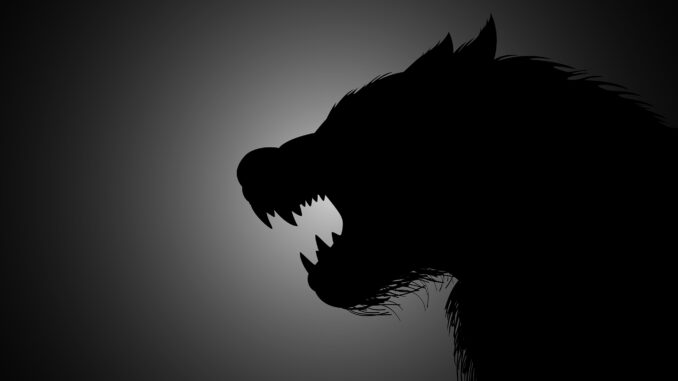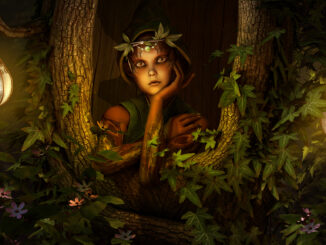
Even a man who is pure in heart and says his prayers by night, may become a wolf when the wolfsbane blooms and the moon is full and bright.
The Wolf Man (1941)
When it comes to horror films, I’ve never really gone in for slasher films or Zombie flicks, I prefer my horror to have a supernatural edge. Vengeful ghosts forever haunting an ancient castle, the immortal undead bleeding virgins dry or my favorite, werewolves. There is nothing better than watching an otherwise decent man turn into a ravenous beast when the sun sets and the full moon rises high.
Since the release of Lon Chaney Jr’s, The Wolf Man in 1941, Hollywood has offered up countless werewolf movies. For the most part, these movies are great entertainment; but as with most movies based on legendary monsters, Hollywood tends to come up short where the real folklore is involved.
Legends of cursed people forced to transform into bloodthirsty beasts didn’t originate in the Carpathian Mountains or the windswept moors of England. The legends of man-beasts can trace their origins much further back in the mists of ancient history. And believe me when I tell you, the truth is far more terrifying than any late-night creature feature.
Folklorists and anthropologists believe stories of man turning into a monstrous creature may have started with the magical and religious beliefs of early man. Prehistoric hunters would clothe themselves in the pelts of deadly predators in the hopes they would gain the cunning of these bloodthirsty animals. This sympathetic magic, as it was called, was believed to give the hunter the edge they needed for a successful hunt. This practice may have started with prehistoric hunters, but it was the Greeks of antiquity who gave the beast it’s supernatural component.
The term lycanthropy is used in psychology to describe the delusion of a man transforming into a beast. The word has its origins in the works of Ovid, a Roman poet and author. In one of his works, Ovid tells the story of Lycaon, a king of Arcadia. Lycaon, incurred the wrath of Zeus and was cursed to turn into a senseless beast. Ovid describes the king’s condition in frightening detail: “In vain, Lycaon attempted to speak…he thirsted for blood. He raged among the flock and panted for slaughter. His vesture (skin) turned to hair. His countenance was rabid. And his eyes glittered savagely.” Historians and skeptics agree, Ovid was describing a man afflicted with rabies. While this may be true, it’s best to take one detail into consideration, rabies sufferers don’t grow hair when the moon is high.
If Ovid’s account fails to convince you, consider the words of Gaius Petronius, author of The Satyricon. While attending a wedding in 60 CE, Petronius made the acquaintance of a strange man who would forever haunt his dreams. The author and his new friend left the wedding as the moon rose high in the sky. When the two men walked into the surrounding woods, Gaius watched as his friend transformed into a great wolf and ran off into the woods.

T-Shirts, Mugs and More!
We now have t-shirts, tarot decks, ESP cards, coffee mugs, face masks, and much more merchandise available for purchase. Every dollar spent helps fund Paranormal Study!
Our final example from antiquity concerns a tribe of shapeshifters known as the Neuri. According to the ancient Greek historian, Herodotus, the Nueri were a tribe who lived near the Scythian farmers but were driven from their land by snakes. Herodotus wrote that each of the Neuri would become a wolf for a few days before returning to their human form.
Our modern concept of the shapeshifting beast may come from the ancient world, but the term “werewolf” comes to us from England. In 1212 CE, Gervase of Tilbury described in his book, Otia Imperialis, a tribe of people with the magical ability to turn into wolves. Historians widely believe Gervase wasn’t describing magical shapeshifters, but rather a clan of murderous outlaws.
Delving further into history, we come to the tragic period in Europe known as, ‘the burning times.” Alleged werewolves were caught up in the witchcraft frenzy and executed by the established church who believed they sold their soul to the devil. In 1573 France, the suspicion of diabolism fell on a simple farmer accused not only of being in league with Lucifer, but the vile crime of cannibalism.
Gilles Garnier, was by all accounts a simple farmer until he was arrested for the unspeakable crimes of heresy, murder and cannibalism. At his trial, Garnier confessed to selling his soul to a black clad stranger for a magical salve and wolf pelt. According to Garnier, the stranger told him if he rubbed the salve on his skin and wore the pelt, he would turn into a wolf. As a wolf, Garnier murdered and devoured several children. The simple farmer was found guilty and sentenced to burn at the stake for his gruesome offenses.
In other parts of Europe, there were a wide variety of superstitious beliefs concerning shapeshifting. Some believed it was a curse handed down by God to heretics. While others believed if a child was born with teeth or a prominent eyebrow, they would grow up to be a werewolf. It was also believed if you peeled back the skin of a suspected werewolf, you would find hair. I can’t even imagine the horrific torture the accused endured before being executed.
Although werewolf legends come from Europe, stories of diabolical shapeshifters can be found among the Native peoples of North America. In the American southwest, the Navajo live in fear of Yee Naaldlooshi, the dreaded Skinwalker. Skinwalkers are practitioners of black magic who use primordial forces to turn into grotesque creatures. Skinwalkers allegedly use the bones of slaughtered children in their arcane rituals to achieve their beastly form. The Navajo believe in this being so strongly they dare not even speak of it. To speak of the Skinwalker is to invite its evil into your life.
Today, modern science accepts a person can transform into a beast, not physically of course, but psychologically. Lycanthropy is an extraordinarily rare condition, where the sufferer believes they can turn into a ravenous animal. One case from France, tells of a man discovered in a Paris alley, covered in blood and walking around on all fours as he viciously growled at police. It was later discovered that he had torn out his friend’s throat with his teeth.
When the police failed to get the man under control, he was transferred to a psychiatric hospital. When he arrived, the man broke out of his handcuffs and proceeded to beat up and bite hospital workers as they tried to get him under control. According to one hospital worker, it was as if the man became bestial before their eyes.
The legend of the werewolf is one that is truly terrifying. But why does this crazed beast fascinate us so easily? Perhaps we see something of ourselves in a beast who lives free, unfettered by society and its rules.
If you found the content in this article to be of any value to your paranormal studies, please let us know in the comments below. Feel free to share this article with your friends as well because if you found it interesting, they might too.
Do You Want To Know More?
Our content creators also have podcasts that go much deeper into paranormal topics.
Tim Woolworth’s Walk in the Shadows, an episodic masterclass that consists of a deep dive into all things Fortean, paranormal and supernatural.
Rick Hale teams up with Stephen Lancaster in The Shadow Initiative where they explore various paranormal topics and discuss current paranormal news.
Please check these shows out and visit Paranormal Study social media to keep up to date on articles and all the things our authors are doing.




Be the first to comment